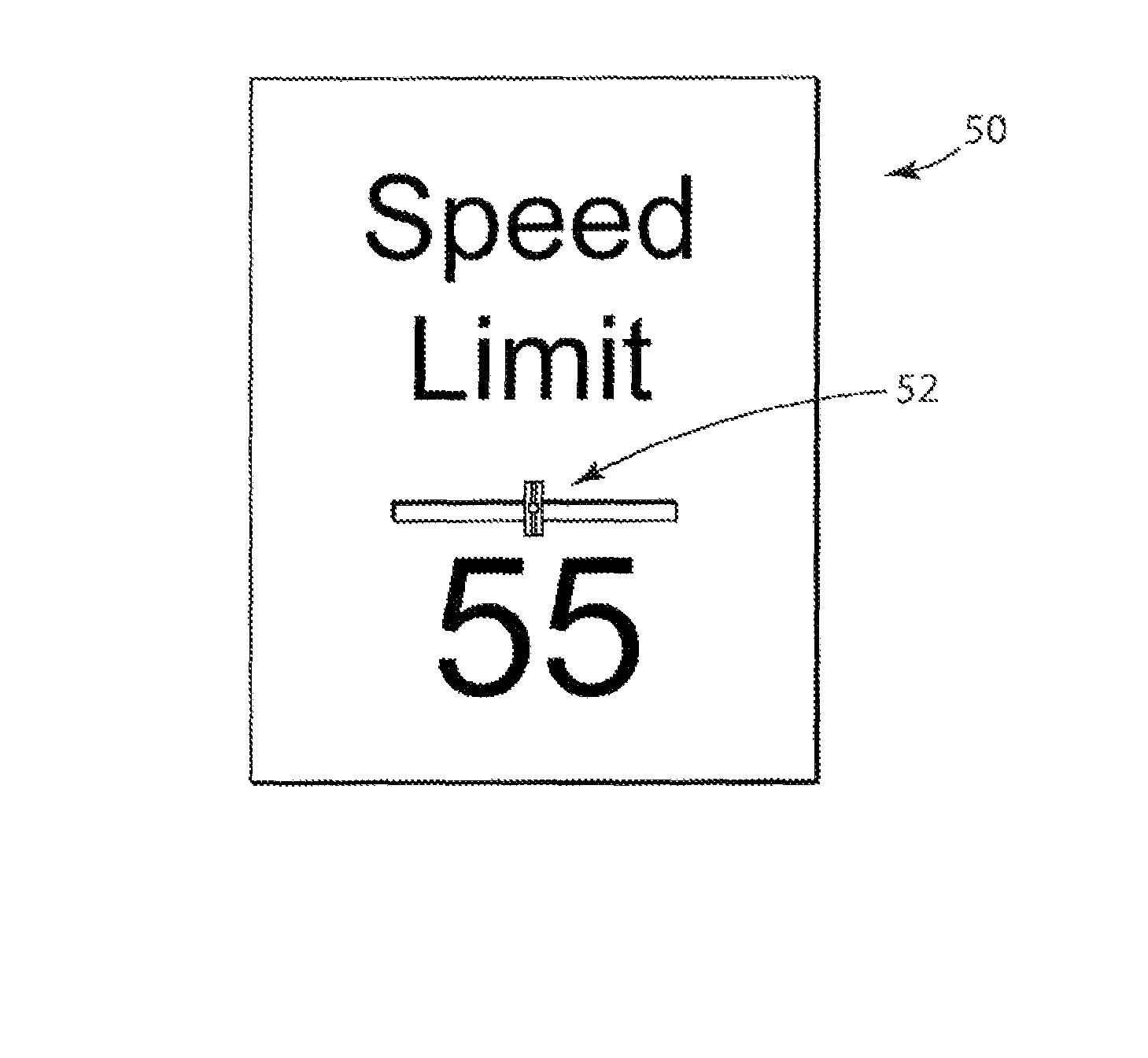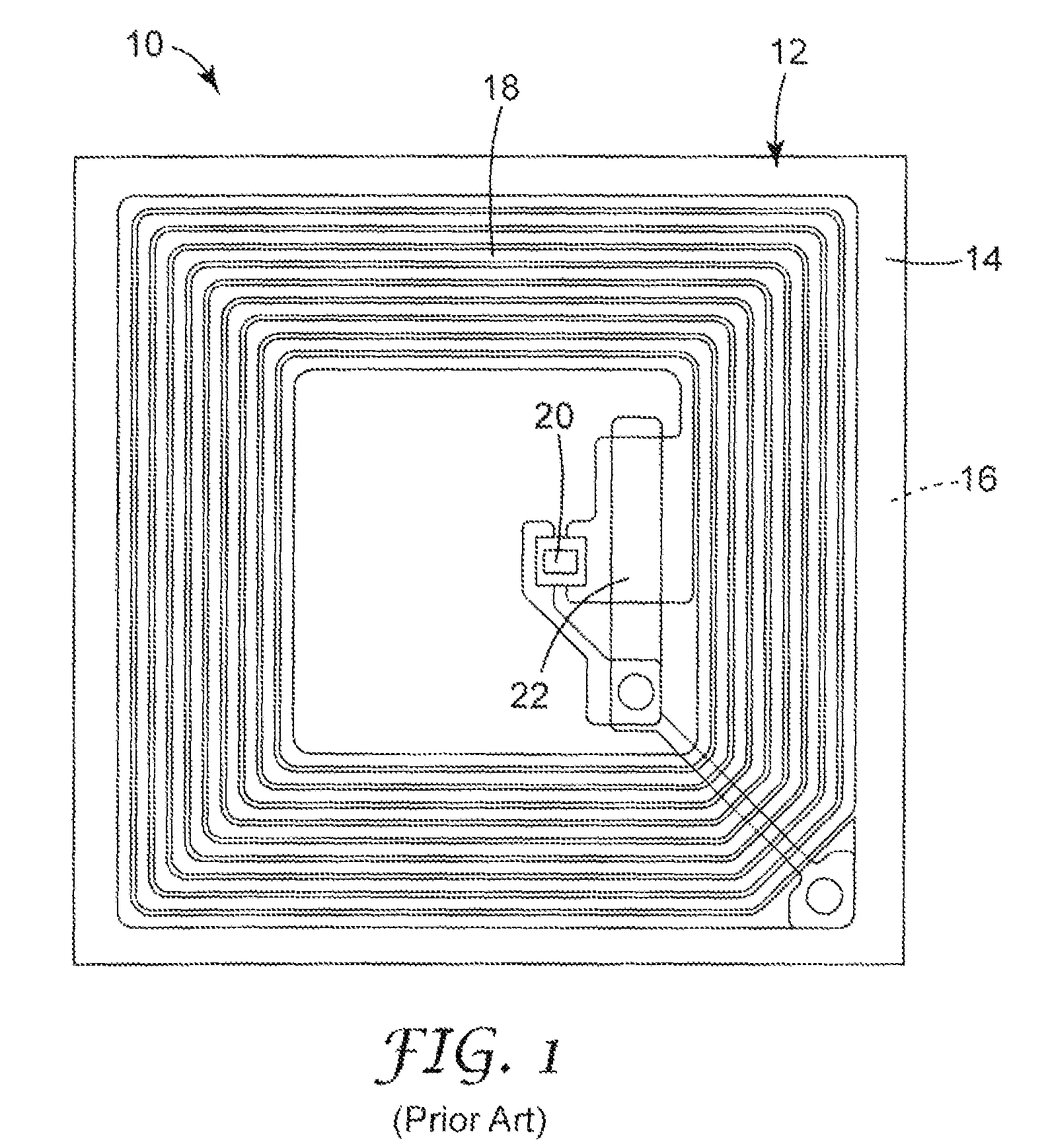Radio frequency identification functionality coupled to electrically conductive signage
- Summary
- Abstract
- Description
- Claims
- Application Information
AI Technical Summary
Problems solved by technology
Method used
Image
Examples
example 1
A signage article was made using a plastic substrate onto which was adhered or affixed non-metallized prismatic reflective sheeting. RFID tags (915 MHz) manufactured by Transcore Co. were affixed to one side of each of a variety of plastic substrates having thicknesses ranging from 1 / 10 inch (2.54 mm) to ½ inch (12.7 mm). Retroreflective Diamond Grade™ nonmetallic sheeting manufactured by 3M Company of St. Paul, Minn. was applied to the other side of each of the plastic substrates. The RFID tag on each of the plastic substrates was successfully read with an Intermec handheld reader at a distance of approximately 30 feet.
example 2
A cutout roughly 0.5 inch (12.7 mm) greater in dimension on all sides than a 2 inch (5.08 cm) by 3 inch (7.62 cm) 915 MHz passive Transcore RFID tag was cut into a 0.08 inch (2.03 mm) thick, 18 inch (45.7 cm) by 24 inch (61 cm) aluminum sign substrate. One of the major surfaces of the sign substrate was covered with retroreflective Diamond Grade™ sheeting manufactured by 3M Company of St. Paul, Minn. The RFID tag was placed into the cutout. A plastic plug having a thickness and shape that approximately matched the thickness and shape of the removed sign substrate was placed into the cutout such that the plastic plug was positioned adjacent to the RFID tag. Thus the plastic plug was substantially similar in size and shape to a size and shape of the cutout. A piece of non-metallic tape was placed on the backside of the sign substrate such that it completely covered the cutout and was positioned adjacent to the plastic plug. The RFID tag was successfully read with an Intermec handheld ...
example 3
The following example was modeled to determine the effect of changing the y dimension of the cutout with the tag centered in the x and y dimensions with respect to the metal plate and located flush with the front of the plate (along the z dimension). A 4.5 inches (11.43 cm) long and 3.5 inches (8.89 cm) high cutout in position A (as described above) was modeled in a metal plate measuring 12 inches (30.48 cm) by 12 inches (30.48 cm) and made of ⅛ inch (0.137 cm) aluminum stock. The cutout used for this model was identical to cutout A except that the y dimension was made to be 3.5 inches (8.89 cm) by moving the upper edge of the cutout upward. The results are shown in FIG. 12. FIG. 12 shows that when the y dimension of the cutout is enlarged, the radiation pattern changes with a reduction in directivity. Thus the size of the cutout can be used to change or optimize the radiation pattern.
PUM
| Property | Measurement | Unit |
|---|---|---|
| Thickness | aaaaa | aaaaa |
| Thickness | aaaaa | aaaaa |
| Electrical conductivity | aaaaa | aaaaa |
Abstract
Description
Claims
Application Information
 Login to View More
Login to View More - R&D
- Intellectual Property
- Life Sciences
- Materials
- Tech Scout
- Unparalleled Data Quality
- Higher Quality Content
- 60% Fewer Hallucinations
Browse by: Latest US Patents, China's latest patents, Technical Efficacy Thesaurus, Application Domain, Technology Topic, Popular Technical Reports.
© 2025 PatSnap. All rights reserved.Legal|Privacy policy|Modern Slavery Act Transparency Statement|Sitemap|About US| Contact US: help@patsnap.com



